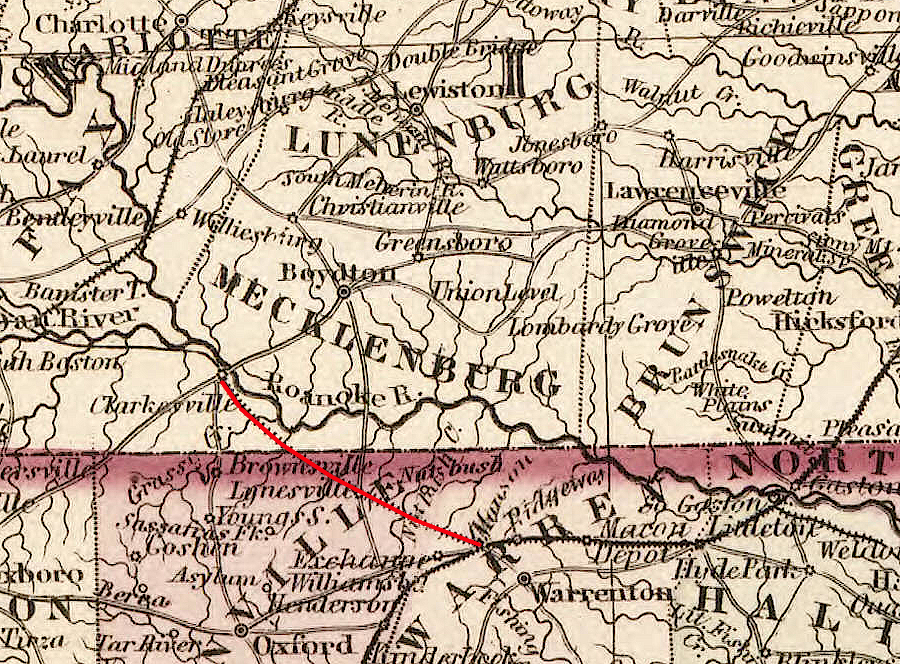
the Roanoke Valley Railroad linked Clarksville with the Raleigh and Gaston Railroad at Manson, North Carolina
Source: University of North Carolina, Johnson's North and South Carolina (by A. J. Johnson, c.1861)

the Roanoke Valley Railroad linked Clarksville with the Raleigh and Gaston Railroad at Manson, North Carolina
Source: University of North Carolina, Johnson's North and South Carolina (by A. J. Johnson, c.1861)
The Roanoke Valley Railroad was intended to move freight from Clarksville, on the Roanoke River, south to the Raleigh and Gaston Railroad at Ridgeway or Manson, North Carolina. The North Carolina and Virginia legislatures chartered the railroad in 1851. Track was completed to Manson (Ridgeway) in 1855.
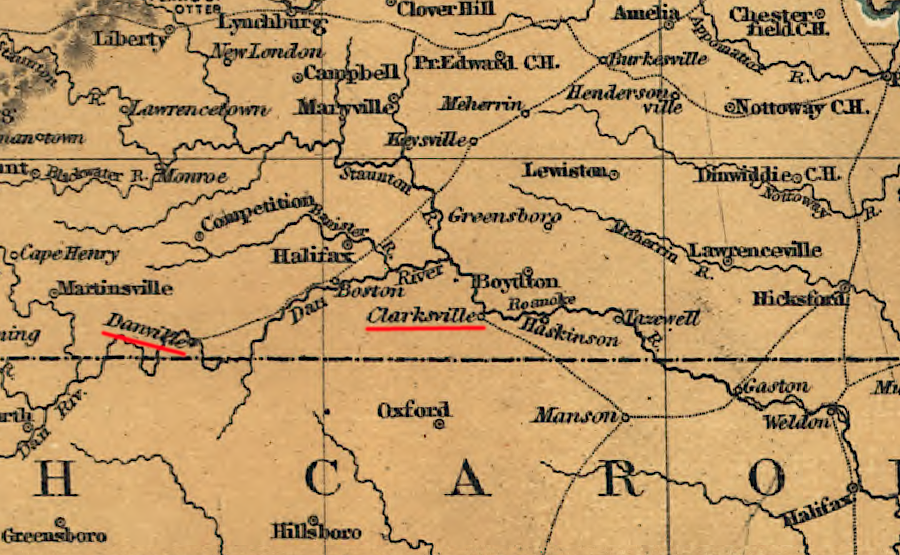
before the Civil War, Clarksville was connected to the railroad network via Manson, North Carolina rather than to the Richmond and Danville Railroad
Source: Library of Congress, Virginia, Maryland, Delaware, and part of Pennsylvania (by Jacob Wells, 1863)
The Raleigh and Gaston Railroad assisted in the initial operations, since the Roanoke Valley Railroad would feed traffic to its line.
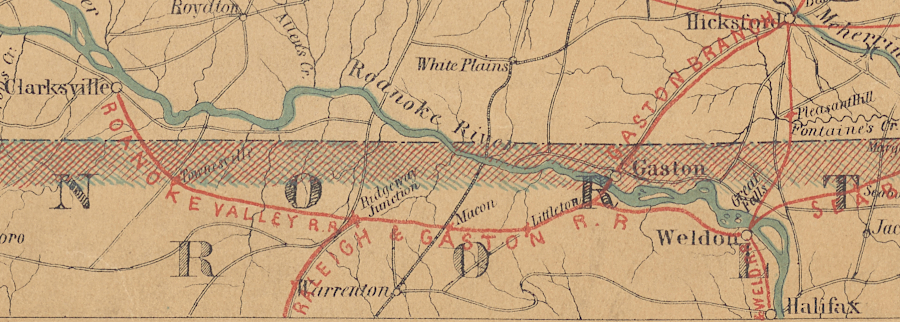
the Roanoke Valley Railroad connected to the Raleigh and Gaston Railroad, and cargo could then go to the ports at Petersburg, Portsmouth, or Wilmington
Source: New York Public Library Digital Collections, Map of eastern Virginia (by Alexander D. Bache, 1862)
Clarksville was a major tobacco market. The Roanoke Valley Railroad provided a more-reliable and less-costly alternative to floating products down the river on bateaux to Gaston, or hauling via wagons or rolling 1,000-pound hogsheads on plank and mud roads for 80 miles to Petersburg.
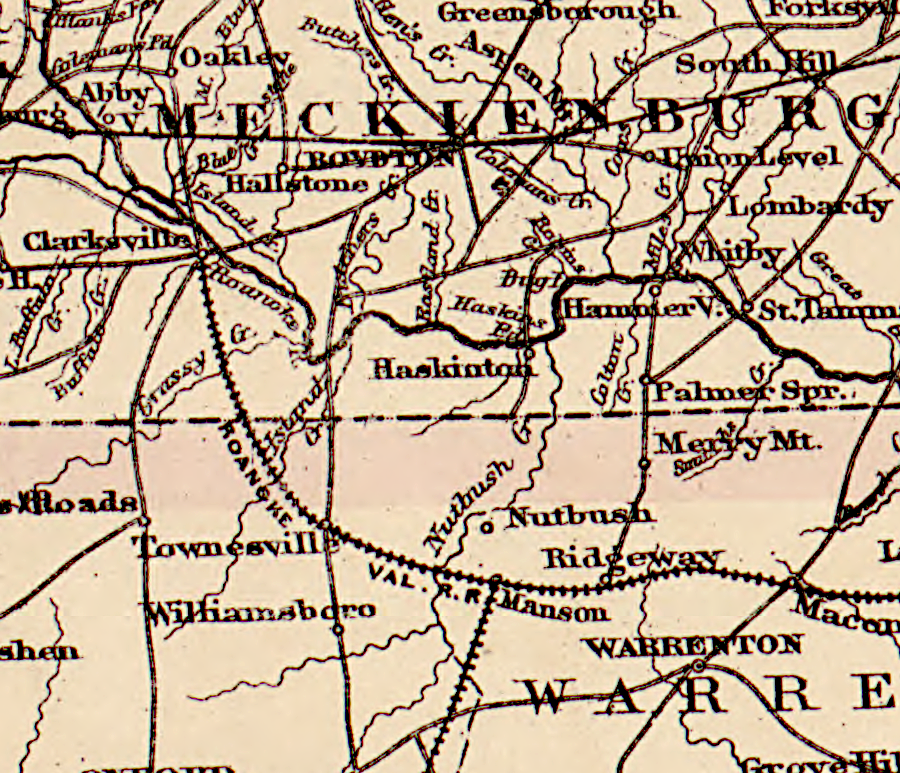
the Roanoke Valley Railroad linked Clarksville to Manson, initially
Source: Library of Congress, Map of the Virginia, Kentucky, and Ohio Railroad connecting the railroads of Virginia with the railroads of Kentucky... (1881)
In 1858, the Roanoke Valley Railroad got authorization from the Virginia General Assembly to build an extension to the north. The railroad considered building new track from Clarksville to the Richmond and Danville Railroad at Keysville, or building to the South Side Railroad at Black's and White's (now Blackstone).
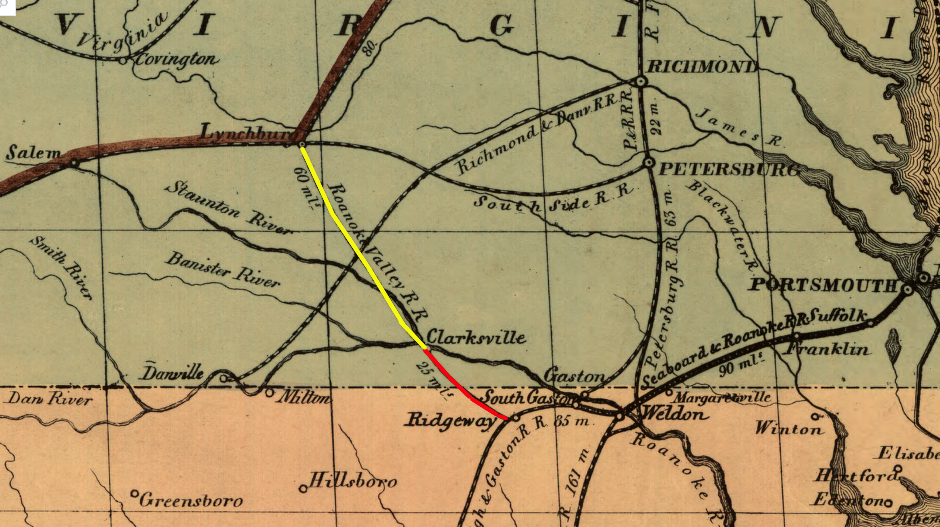
in 1851, the Roanoke Valley Railroad envisioned building north to Lynchburg (yellow) as well as south to Manson (red)
Source: Library of Congress, General map of the Orange & Alexandria Rail Road and its connections north, south, and west. (1851)
The decision was to build towards Keysville. Construction had not advanced far before being interrupted by the Civil War.
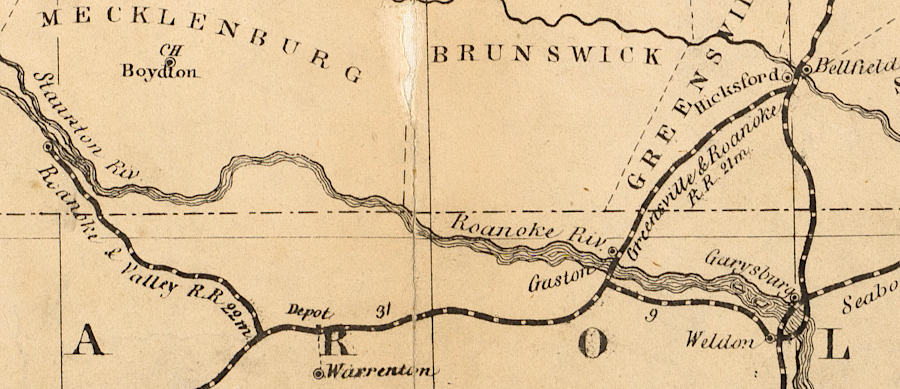
the Roanoke Valley Railroad was authorized in 1858 to build an extension north to the Richmond and Danville Railroad at Keysville
Source: Library of Virginia, A map of the rail roads of Virginia (1858)
The Union Navy blockaded ports in Virginia and North Carolina, essentially ending the export of tobacco from Clarksville. The Confederate government determined that the Roanoke Valley Railroad's ability to haul tobacco to Manson was low priority for the war effort.
The locomotives, cars, and even the rails of the Roanoke Valley Railroad were removed. The railroad was sacrificed to build and operate the Piedmont Railroad, which was constructed further west in 1862-1863 to link Greensboro-Danville.
The Roanoke Valley Railroad stopped at Clarksville. The new Piedmont Railroad was designed to provide a rail link all the way to the front lines in Northern Virginia. The Piedmont Railroad connected to the Richmond and Danville Railroad, and together they could carry soldiers and material from Georgia to Richmond, or via the South Side Railroad to Lynchburg. There were other rail connections from Richmond and Lynchburg which reached Fredericksburg and Manassas.
After the Civil War, the Roanoke Valley Railroad line between Clarksville-Manson was never rebuilt.
The corporate status of the railroad still retained value. The Richmond and Danville Railroad bought the rights of the Roanoke Valley Railroad in 1868, but outstanding claims against the company complicated the transfer of property title and the right to build track between Clarksville and Keysville.
In 1875, a new charter for the Richmond and Mecklenburg Railroad granted that new company the right to build from Clarksville to Keysville. The holding company known as the Richmond Terminal Company acquired the charter of the Richmond and Mecklenburg Railroad in 1881, then built 34 miles of track south of Keysville. The Richmond and Mecklenburg Railroad reached Clarksville in 1884.
Construction of the Richmond and Mecklenburg Railroad created the town's first rail link to the north, and the first railroad link in over two decades. There was no railroad in Clarksville between the Civil War and 1884.
Clarksville re-established a railroad link to the south four years later. The track was not rebuilt to Manson along the old route of the Roanoke Valley Railroad.
Instead, in 1888 the Oxford and Clarksville Railroad built from Clarksville south to Oxford, North Carolina. The seven-mile section in Virginia was chartered as the Clarksville and North Carolina Railroad.
With completion of track to Oxford, there was a complete rail connection between Keysville (on the Richmond and Danville Railroad) and Oxford (on the North Carolina Railroad). The line essentially paralleled the old Piedmont Railroad on the west and the old Petersburg Railroad on the east.1
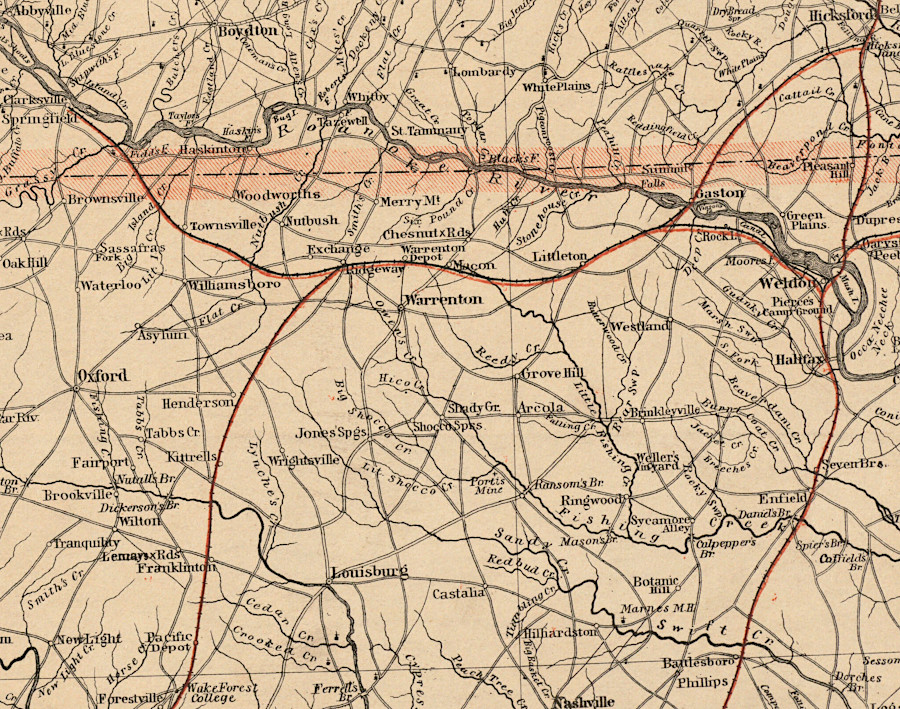
through the Roanoke Valley Railroad, trains could carry agricultural products from Southside Virginia to Petersburg or Norfolk
Source: Norman B. Leventhal Map & Education Center, Boston Public Library, Middle Virginia and North Carolina (1864)
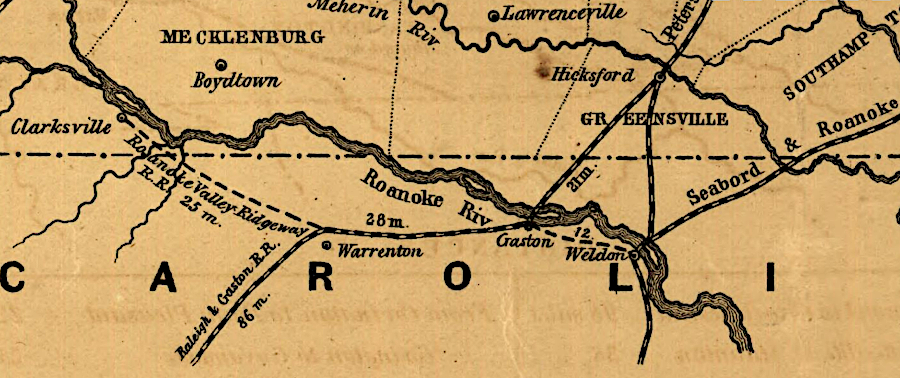
the Roanoke Valley Railroad was designed to carry freight east to an Atlantic Ocean port, reducing travel time on the Roanoke River
Source: Library of Congress, Map of the Virginia Central Rail Road showing the connection between tide water Virginia, and the Ohio River at Big Sandy, Guyandotte and Point Pleasant (bt W. Vaisz, 1852)